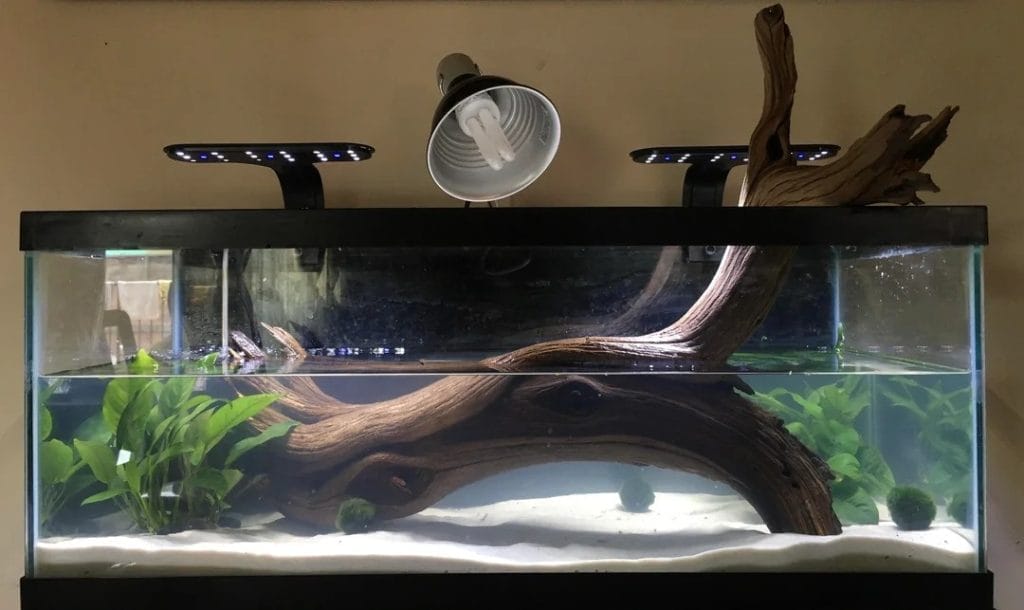Experts Reveal the Perfect Turtle Pond Depth for Happy, Healthy Turtles

This post was created with help from AI tools and carefully reviewed by a human (Muntaseer Rahman). For more on how we use AI on this site, check out our Editorial Policy.
If you’ve ever stood next to your turtle pond wondering if it’s deep enough—or maybe too deep—you’re not alone. Many turtle owners grapple with this question, and it’s more crucial than you might think.
The right depth can mean the difference between a happy, healthy turtle and one that’s stressed or unsafe.

How Deep Should a Turtle Pond Be?
When I built my first turtle pond, I underestimated one thing—how crafty turtles can be. One of them, Speedy (ironic name, I know), nearly escaped because the pond wasn’t deep enough for him to dive and feel secure. Lesson learned: depth matters, a lot!
Here’s how you can avoid my rookie mistakes.
Factors That Determine Pond Depth
- Turtle Species: Larger turtles need deeper water.
- Pond Size: More turtles = bigger pond.
- Climate: Freezing winters? Go deeper.
Quick Depth Formula
Use this easy formula to plan your pond:
Length × Width × Depth (in feet) = Volume (in gallons).
For one turtle with a 5-inch shell, you’ll need about 50 gallons of water. That’s roughly:
- Length: 6.5 feet
- Width: 4 feet
- Depth: 2 feet
This Hilarious Turtle Book Might Know Your Pet Better Than You Do
Let’s be real—most turtle care guides feel like reading a textbook written by a sleep-deprived zookeeper.
This one’s not that.
Told from the snarky point of view of a grumpy, judgmental turtle, 21 Turtle Truths You’ll Never Read in a Care Guide is packed with sarcasm, sass, and surprisingly useful insights.
And hey—you don’t have to commit to the whole thing just yet.
Grab 2 free truths from the ebook and get a taste of what your turtle really thinks about your setup, your food choices, and that weird plastic palm tree.
It’s funny, it’s honest, and if you’ve ever owned a turtle who glares at you like you’re the problem—you’ll feel seen.
Why Depth Should Vary
A turtle pond isn’t just about one depth. A variety of depths make it functional and turtle-friendly.
Sloped Entry
- Helps turtles easily climb in and out.
Shallow Zones (A Few Inches Deep)
- Perfect for basking and resting.
- Allows turtles to breathe while staying submerged.
Deep Zones (3–4 Feet)
- Supports larger turtles and future growth.
- Prevents water from freezing entirely in winter.
Depth by Turtle Species
Here’s a handy table for common species:
| Turtle Species | Max Adult Size | Depth (ft) | Length (ft) | Width (ft) |
|---|---|---|---|---|
| Painted Turtle | 7 inches | 2 | 7 | 4 |
| Box Turtle | 8 inches | 2.3 | 7.5 | 4.6 |
| Common Map Turtle | 10 inches | 2.5 | 8 | 5 |
| Red-Eared Slider | 12 inches | 2.6 | 8.6 | 5.2 |
| Yellow-Bellied Slider | 13 inches | 2.7 | 8.8 | 5.4 |
| Common Snapping Turtle | 14–19 inches | 3 | 10 | 6 |
Climate Considerations
Live in a cold area? Turtles brumate (think hibernation for reptiles), so the pond needs to stay unfrozen at the bottom:
- Minimum Depth: 3 feet
- Below Frost Line: At least 18 inches
Pro Tips
- Add Plants: They provide shade and oxygen.
- Use Sand and Mud: Mimics a natural habitat.
- Don’t Skimp on Depth: Better too deep than too shallow!
When I adjusted my pond’s depth, Speedy seemed happier than ever. He even stopped plotting his great escape. A well-thought-out pond will make your turtles safer and more comfortable—and save you from surprise turtle chases!

Outdoor turtle pond setup guide infographic
For a printable version of this infographic, click here!

About Author
Muntaseer Rahman started keeping pet turtles back in 2013. He also owns the largest Turtle & Tortoise Facebook community in Bangladesh. These days he is mostly active on Facebook.












